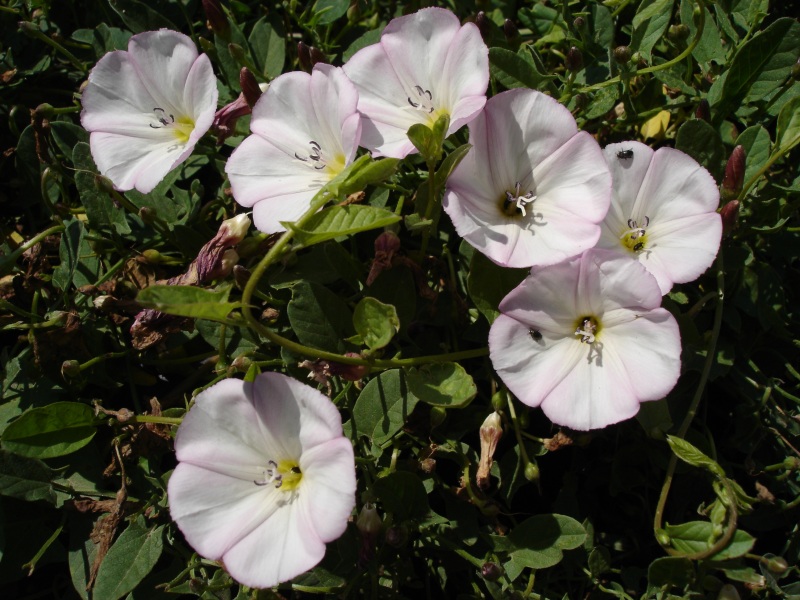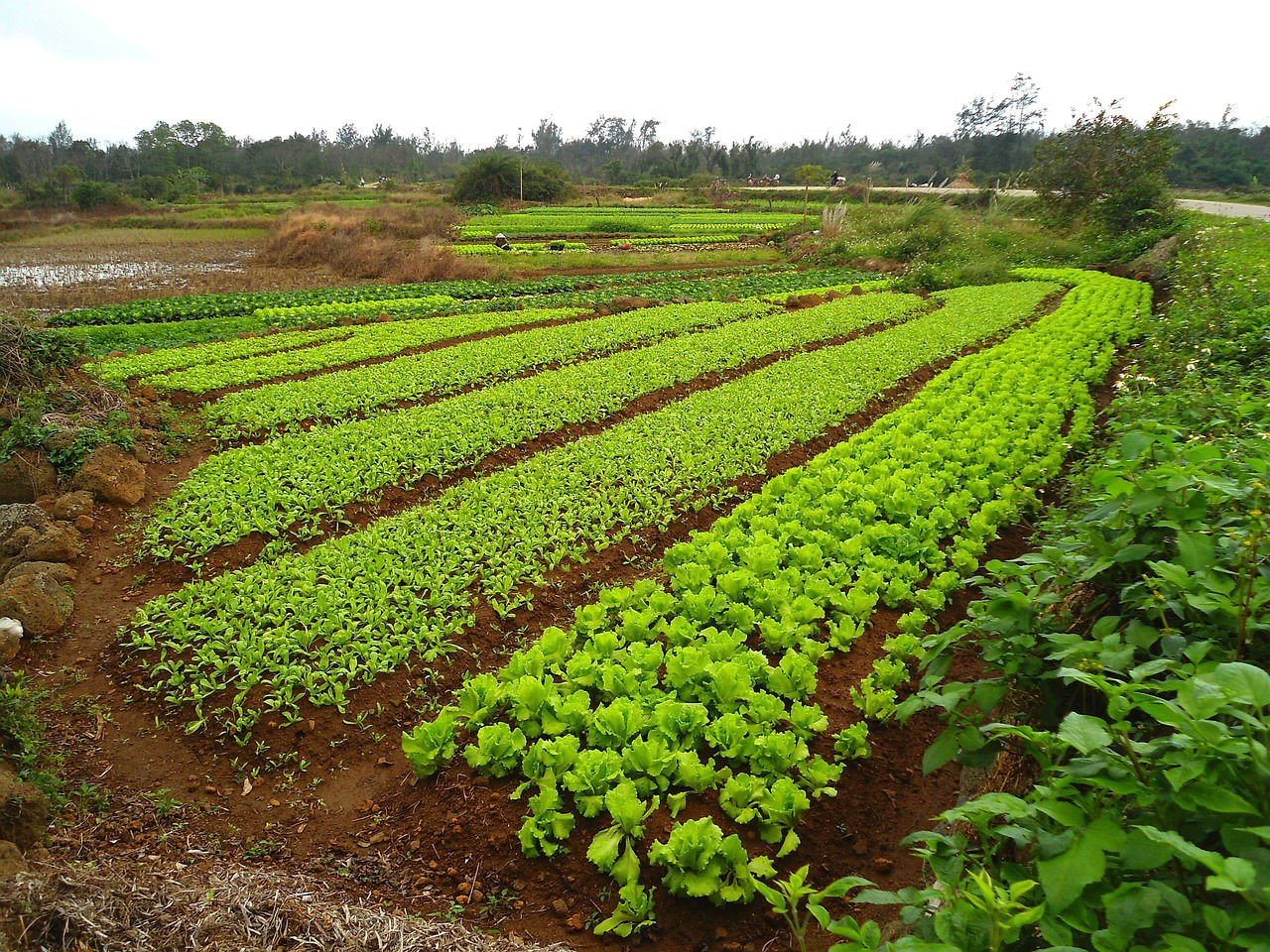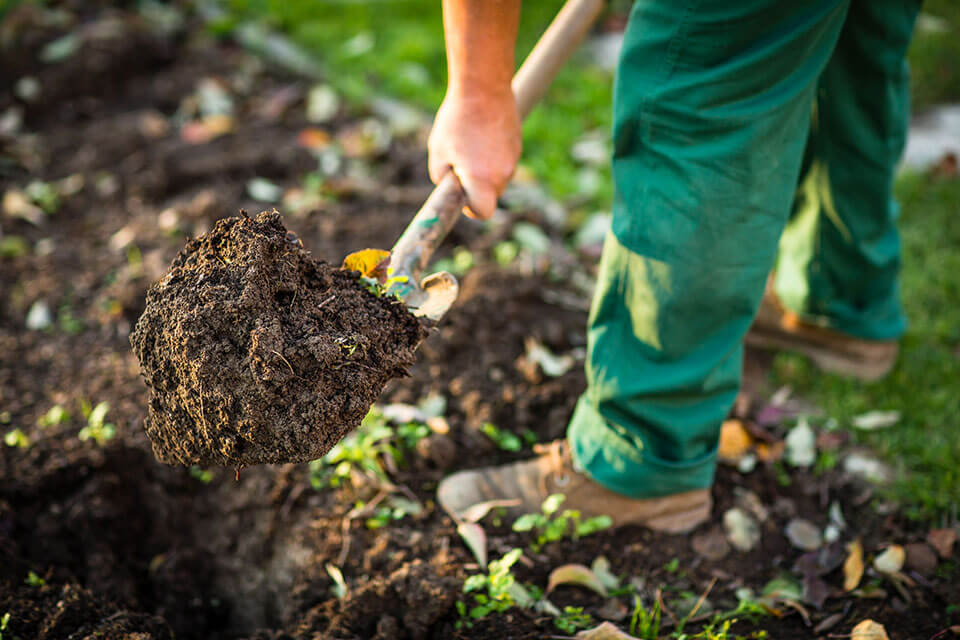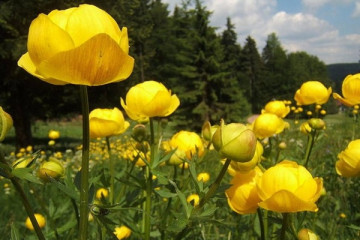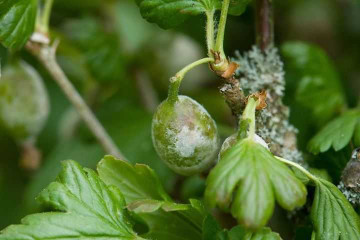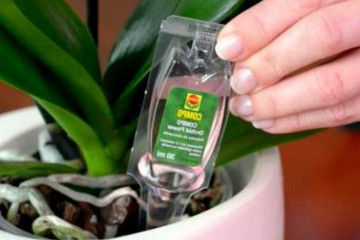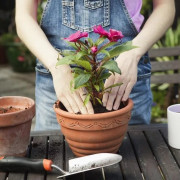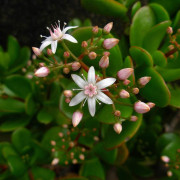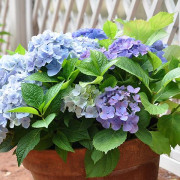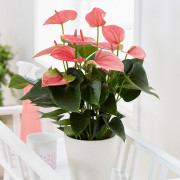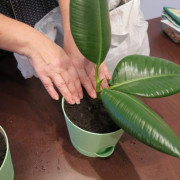How to get rid of bindweed in the garden - modern and folk methods of struggle
Content:
One of the harmful and unwanted plants in the garden is the field bindweed. This weed can be recognized by a curling, thin stem 3 m long and flowers in the form of a gramophone. Its fertility reaches colossal proportions - over the summer, the plant is capable of producing more than 8000 seeds. In view of this, the question arises: how to get rid of the bindweed in the garden.
What is the danger of the field bindweed in the garden
A flowering bindweed that has braided a gazebo or a fence may look beautiful, but do not forget that this is a real weed. Due to the highly developed root system, this plant dries out the soil, it is not even afraid of drought. Any support is suitable for the growth and development of the bindweed. It quickly braids a beneficial crop, sucking water and nutrients from the ground, and also shields the affected plant from the sun, which leads to a failure in the production of photosynthesis. It will not be easy to free the entwined crops; you will have to harvest this grass by hand.
The propagation of this weed takes place with the help of seeds and through the root system. The seeds retain the ability to germinate for three years. And the root system (even a small part of it) easily takes root in the ground and gives an impetus to the growth of a new plant. This feature of the weed greatly complicates the fight against it.
The harm from bindweed does not end there. Its leaves and flowers are a favorite spot for many insect pests. Therefore, in order to rid the garden and garden of this plant, it is necessary to choose effective methods and begin to remove it.
Effective ways to get rid of weeds in the garden
If a bindweed weed was found on the site, you need to get rid of it immediately. This can be done in several ways:
- chemical;
- mechanical;
- biological.
Chemical
To solve the question of how to deal with a loach in the garden, modern herbicide products will help. One of the most popular and effective drugs is Roundup. To treat weeds, you will need to prepare a working solution consisting of 10 liters of water and 50-110 ml of herbicide. A more accurate proportion is indicated in the instructions and depends on the affected culture.
The finished composition is used for thorough treatment of the affected plants. If the work is to take place during the ripening period, they should be covered. This will be done with plastic bottles or glass jars. During spraying, contact with the solution on crops should be avoided, otherwise it can lead to their death.
After the procedure, the bindweed will begin to fade and will soon dry out completely. It is not yet necessary to remove it from the culture, the drug must reach its root system. On the 4th day, you can see the first results, and after 2 weeks, you can remove the weeds.
For maximum results, you should choose the right time for processing.So bindweed has two phases - when nutrients circulate from the root to the leaves and vice versa. In order for weed control to give the maximum result, it is necessary to process it in the phase when the substances will circulate from the leaves to the root system.
To solve the problem of how to get rid of the bindweed permanently on the site, you can use the chemicals "Hurricane", "Tornado" and others. The procedure for using them is similar. It is important to first read the instructions and follow its recommendations.
The optimal time to control this weed is the second half of spring and the end of summer. Also, you can not immediately remove the bindweed in order to allow the drug to affect the root system. After 15-20 days, you can start cleaning the site and digging it.
If the dosage is incorrectly calculated, you can destroy the ground part without affecting the roots. The remaining root system will allow the plant to grow again and again need to get rid of it.
Mechanical
One of the ways to permanently remove the bindweed from the garden is to weed it. The procedure must be carried out in a timely and regular manner. Its main task is to prevent weeds from spreading over the site and carefully remove all parts of it. In this case, it is important to monitor the condition of the seeds and not allow them to ripen. Otherwise, the result of weeding will be temporary, and after a few months new shoots of bindweed will appear.
If the cultivated plants are attacked by the field bindweed, control measures may imply a deep digging of the site. For a positive result, it is necessary during this process to remove all parts of the weed root system from the ground. The shovel, habitual for digging, is replaced by garden pitchforks. Unlike the first tool, they do not deform the root system, because even a small part of it cannot be left.
The following mechanical methods are capable of defeating the field bindweed:
- Self-extracting root system. The procedure is quite long and laborious, requiring physical strength and time. The plant must be completely rooted, otherwise the bindweed will continue to multiply. The main task is not to leave a single root or part of it.
- Long-term processing. It is necessary to rid the garden plot of climbing weeds in the fall or spring, when crops are not supposed to be planted in the coming season. Before fighting the field bindweed, a dense black film is acquired. It can be found in the construction market and in the building materials store. To destroy this weed, the site is covered with a film for 2-3 months.
The heated soil contributes to the early germination of seeds. As a result, the bindweed begins to grow, but does not break through the film and does not receive sunlight. Such plants become lethargic, their leaves are loose, and the root system weakens. And, as a result, the weed dies completely.
Biological
There are several plants, the neighborhood with which the field bindweed does not tolerate. They belong to siderates - plants that are planted in the soil with the aim of improving it. So you can plant your site with the following herbs:
- mustard;
- wiki;
- fescue;
- peas;
- bluegrass.
They are sown in early spring with a fairly high density. Often, farmers in the fight against bindweed plant their fields with buckwheat, oats, mustard or other plants. The procedure is carried out in early spring so that the green manure can grow before the weed.
The effectiveness of this method implies the formation of a thick layer of useful crops, through which the bindweed cannot break through. At a time when the planted green manure plants are sufficiently elongated, but have not yet begun to bloom, they are mown. The resulting greens can be used later for mulching or be embedded in the ground.
Full shading of the area
A simple and effective way to control weeds is to cover the area with materials that do not allow the sun's rays to pass through. However, it involves the investment of certain financial costs, as well as the presence of a large or not planted vegetable garden.
What materials are suitable
The whole area or part of it is covered with black plastic wrap, cardboard, roofing felt, plywood or other materials that do not let the sun through. In this state, the garden will last for at least a season. Over the summer, the bindweed should die on this site, but do not forget about the seeds, the germination of which will last up to 3 years.
Which plants are suitable
Another option is to lay the mulch in a thick layer to prevent the bindweed from germinating. But, as practice has shown, this method leads to weakening of the weed, but not to its death. The same can be said about planting zucchini, pumpkins and other plants, whose large leaves can shade the area. This option can be used only if the defeat of the bindweed is small.
Folk methods of struggle
Since the loach weed grows well on acidic soils, its activity can be contained if the acidity index is reduced. To do this, in spring or autumn, while digging a vegetable garden in the country, slaked lime or wood ash is added to the ground in large quantities. It is recommended to apply lime carefully, especially if fruit trees or shrubs grow nearby.
In addition to this method, there are several more simple but effective options:
- A folk remedy for bindweed is table salt, which the plant cannot tolerate. 1 kg of salt is diluted in 20 liters of water, the prepared solution is used for irrigation. Before using this option, it is important to know that not all crops will be able to subsequently grow in saline soil.
- You can even remove the field bindweed with simple boiling water, which is abundantly watered with weeds. This method is suitable if there are no cultivated plants growing nearby. Otherwise, there is a risk of burning their roots.
- If potatoes are not planted on the site, you can treat it with ash. The weed plant prefers iron-deficient soils. If its deficiency is made up with wood ash, the garden will be unattractive to the weed. The method is not able to permanently get rid of the bindweed, it will only halt the development of new plants.
- Planting cereals as an effective and useful method. This plant is not of interest to a climbing weed, so planted wheat or other crops around the perimeter of the site are able to protect it.
Preventive actions
Ridding a garden or lawn of field bindweed is not an easy task. Complex measures are often required. You need to know the enemy by sight and take a number of preventive measures in order to protect your plantings from uninvited guests:
- Regularly inspect the garden for the presence of this weed. It is easiest to get rid of it at the initial stages of propagation and before the formation of seeds.
- Check the soil and fertilizers brought to the site, since most of the weed gets to the sites in this way.
- Monitor the acidity of the soil. Its optimal performance can be achieved by adding lime or ash.
- Carry out an autumn digging of the garden after harvesting the entire crop and cleaning the territory. So the roots of the weed will be on the surface of the earth and will die under the influence of low temperatures.
- Do not skip deep digging of the garden in the spring. At this time, it will be helpful to identify existing plant roots and remove them from the site.
- Remove weeds in a timely manner, without waiting for its development and flowering.
Field bindweed is a common weed that can be found in the garden. Despite the interesting flowers and bizarre weaves that it forms, the plant is capable of causing serious damage to other crops. Its rapid reproduction through seeds and root system can complicate the process of struggle, dragging on for several years. Therefore, at the slightest appearance, it is impossible to let everything take its course, but urgently take measures to remove it from the site.
